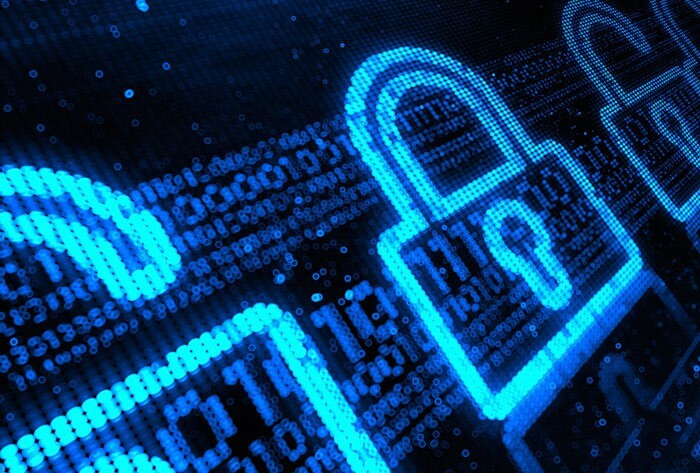A Foundation of Cybersecurity Today, encryption is the basis of digital communication and data storage. The reason you only see unreadable data is due to the fact that, encrypting data turns this not human readable reading for unauthorized people from grabbing or analyze what-type-of-data-it-is. Nowadays the rise in cyber threats make it very necessary for people to get knowledge on what is encryption and how basically one can use this kind of technology whether at personal or corporate level.
What is Encryption?
At a high level, encryption is the encoding of information so that only someone (ideally with an access key) can read it. Encryption Is a Method to Convert Readable Data in the Form of Plain Text into Unreadable Information, i.e. Cipher Text with Multiple Algorithms and Keys When this message is received by the devices of those recipients, they reverse that transformation and decrypt it so the recipient can read what was sent to them.
Types of Encryptions
1. Symmetric Encryption: Symmetric encryption uses a shared secret key; a single Key is used to do both of the operating actions. In this case, both the sender and receiver have to hold this private key (both ends in a communication) It is also the case that symmetric encryption algorithms are very fast and efficient so you can encrypt a huge amount of data with only negligible extra CPU overhead. Symmetric encryption algorithms are one of the oldest and most used types, some asymmetric encryptions you may already know it is Advanced Encryption Standard (AES) or Data Encryption Standard (DES). However, the primary downside of symmetric encryption is to securely deliver a key out in excess.
2. Asymmetric Encryption: A type of encryption where one scale makes its data encrypted and a separate (but equal) evaluation then emerges, in the precise identification or equally related process dimension making it decrypted. They are asymmetric algorithms because they use a specific keypair: you can encrypt using one half of the pair, but only decrypt it by a completely different (uncorrelated) another. In other words, the public key can be shared without exposing a secret key. The owner will decrypt the data using a private key. Asymmetric encryption is performed by many, though RSA (Rivet-Shamir-Aleman) and ECC forming for Elliptic Curve Cryptography are being used the most. Examples of when we use asymmetric encryption include the secure exchange and digital signatures (Optional)
Applications of Encryption
1. Data Protection with Encryption: Making use of encryption to protect data is typical for device-stored (e.g. notebooks, smartphones) and cloud-based stored data as the whole disk is encrypted it protects all data present on a device including cached information such that makes unauthorized decryption impossible. For instance, if somebody took a notebook, encryption might be employed so that the person could not access to this stored advice.
2. Both points are beneficial for security purposes: The 1st one is encryption since online communication needs to be encrypted. With true end-to-end encryption, only the person that sends a message and your recipient can read it no one else. This means if someone is eavesdropping on my pub/sub connection, they will never be able to read these messages.
3. The funds are conveyed: In the digital form and it reuses some encryption techniques too over Online Banking, e-commerce-based sites (having transaction capabilities) called dollars that securely transfer through blockchain. Encryption: Any time we issue any transaction, Encryption gives a secure base for your payment and personal info which now you can buy anything fearlessly from being hefted or fraud.
4. Digital Signature Using Encryption: With the help of encryption, a digital signature is encrypted which means the electronic equivalent of a written signature. Digital signature functions Digital signatures provide a method for ensuring the authenticity and integrity of digital documents. These are widely employed in legal contracts and software packages to act as evidence that the document is authentic, and has not been interfered with or from an unverified source.
Challenges and Future Directions
However, the utility of encryption is still contentious. Another in the strong encryption/back door to law enforcement equilibria we pivot our understanding which, as we will discuss at greater length below provides a very good metric for how well understood an issue is. Of course, that has given rise to a kind of “whack-a-mole” situation where governments and law enforcement keep looking for ways around encryption leading to all sorts of privacy concerns… but with more sophisticated criminals figuring out how not to get caught. Additionally, as technology advances so does how cybercriminals go about their business. Quantum computing. QKD, in simple terms, can work because due to the No cloning principle of quantum mechanics Eve cannot read Alice’s photon; at all available levels anyway [ad given enough revenue directed by pile into squeezing more bits out her recovery device] without being observed since if you try 100 times with one cooing million-dollar perfect qubit computing system it will make mistakes until bob and allice know something is up. Today, encryption is at the heart of modern security, and its privacy benefits are used to protect any type of data dude downtime or sensitive transactions. Encryption converts data to a form that is unreadable only when the proper decryption key is applied, shielding personal or company information such as bank financials. The thing is, with technology evolving and encryption becoming the tech-debt that companies must be paying down to ensure they are always one step ahead of new threats and yet still providing a way for human beings to have digital relationships that no one interferes with.
